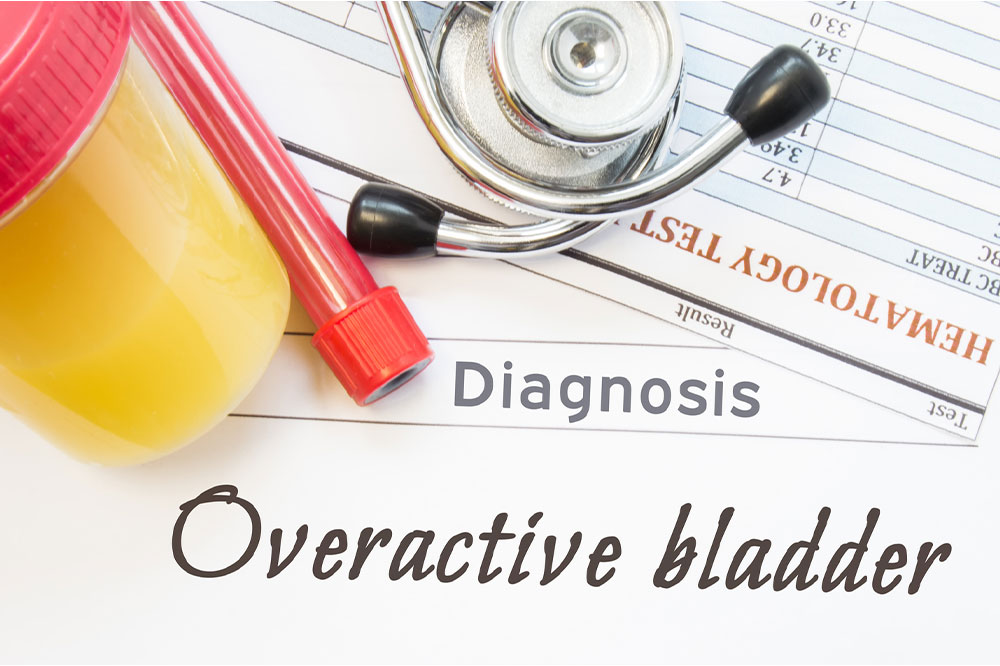
Overactive bladder – Signs and symptoms, causes, and management
Overactive bladder is a condition in which a person has little control over their bladder functions. This leads to leakage, frequent and sudden urge to urinate, and urgency incontinence. While there is no cure for it, several treatment options help manage the symptoms significantly. It may be challenging to be in social situations with OAB, so here’s a brief understanding of the condition’s signs, symptoms, and treatment options.
Signs and symptoms
- Urgency
One of the most noted symptoms of an overactive bladder is the urgency to urinate or relieve oneself. However, while the body may feel this strong urge to urinate, it is possible there is no leak, and it was just a muscle contraction. - Urgency incontinence
This is different from stress urinary incontinence, which happens when a person is sneezing or laughing or involved in other strenuous physical activities. Urgency incontinence refers to a urine leak when there is an urgent need to urinate. - Disturbed sleep
This is primarily due to getting up in the middle of the night to use the bathroom. Frequent urination may disrupt the sleep cycle and cause stress and even sleep deprivation.
While it is okay to use the bathroom frequently on days that the body is getting some extra hydration, if frequent urination is disrupting your lifestyle and causing leaks, it is essential to meet a doctor to take the proper preventive steps for the management of symptoms.
Causes
It is crucial to understand the cause of the problem to understand the treatment. In OAB, the bladder muscles start to involuntarily contract even when there is no or little urine in the bladder. This causes distress and sometimes leaks. There could be other medical factors triggering this response, so it is vital to get a proper diagnosis from the doctor for the same.
Some causes include diabetes, urinary tract infections, abnormalities or growths like tumors or bladder stones, stroke or multiple sclerosis, excess consumption of coffee or alcohol, declining cognitive functions, primarily due to aging, incomplete bladder emptying, hormonal changes in women due to menopause, and difficulty in walking.
Other factors could include some obstruction around the bladder outflow. This could be an enlarged prostate, constipation, or even complications from a previous surgery that treated other incontinence issues.
Management and treatments
Here are some treatment options that can be suggested by a professional.
- Pelvic floor exercises
These exercises aim to strengthen the pelvic floor muscles and the urinary sphincter. Also known as Kegel exercises, a doctor may be able to help with the proper movements and holds for the exercise. This will help control the involuntary muscle contraction that leads to frequent urination. - Biofeedback
This treatment plan involves attaching electrical sensors to your body that receive information about your bodily functions. With the help of a doctor, the patient can understand this information and make subtle changes in the body, for example, strengthening the pelvic muscles. These changes can eventually help in managing the symptoms. - Bladder training
This is possible only when some pelvic exercise training has been done to control the bladder muscles. This training allows for delaying the need to urinate for some time. The training starts with postponing the urge to urinate for 30 minutes and then using the bathroom every 3 to 4 hours. - Absorbent pads
Leakage or frequent urination could be embarrassing at a social gathering, so absorbent pads make for a well-crafted solution for such circumstances. Fortunately, several brands are available in the market, and the napkins come in all sizes and varying absorption levels. - Intermittent catheterization
Since OAB can cause a lot of stress to the body and bladder muscles, it may be helpful to consider this option. With periodic catheterization, the bladder will be able to empty itself fully without going through the frustration of involuntary loss of urine from time to time.
There are some preventive measures that can be taken as well, such as limiting alcohol and caffeine consumption, getting regular physical exercise, maintaining a healthy weight, so there is no stress on the muscles, quitting smoking, managing chronic diseases like diabetes better.
It can be frustrating to manage symptoms of this illness, which could lead to other complications like emotional distress, depression, and even anxiety. There may also be issues arising with intimacy and sexuality, leading to straining relationships. An interrupted sleep cycle may lead to sleep deprivation or even insomnia if you are constantly staying awake through the night.




